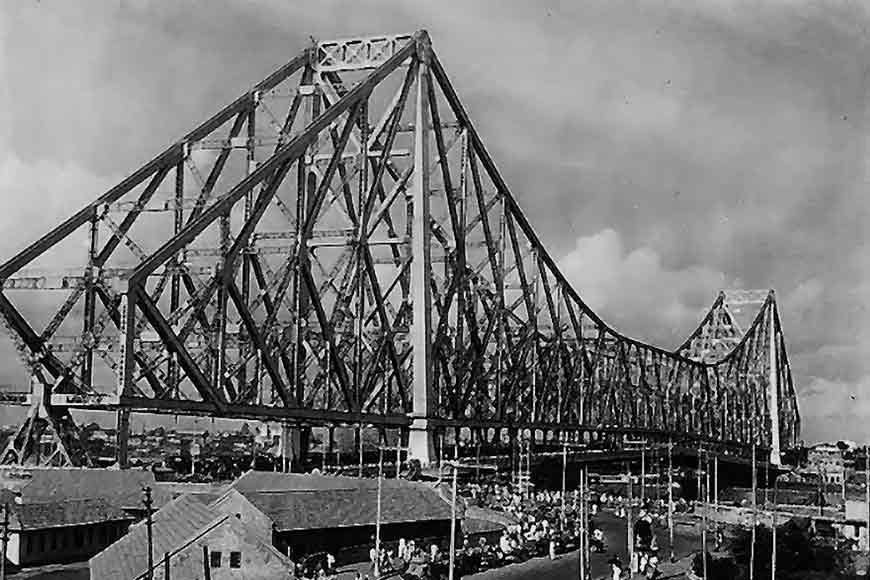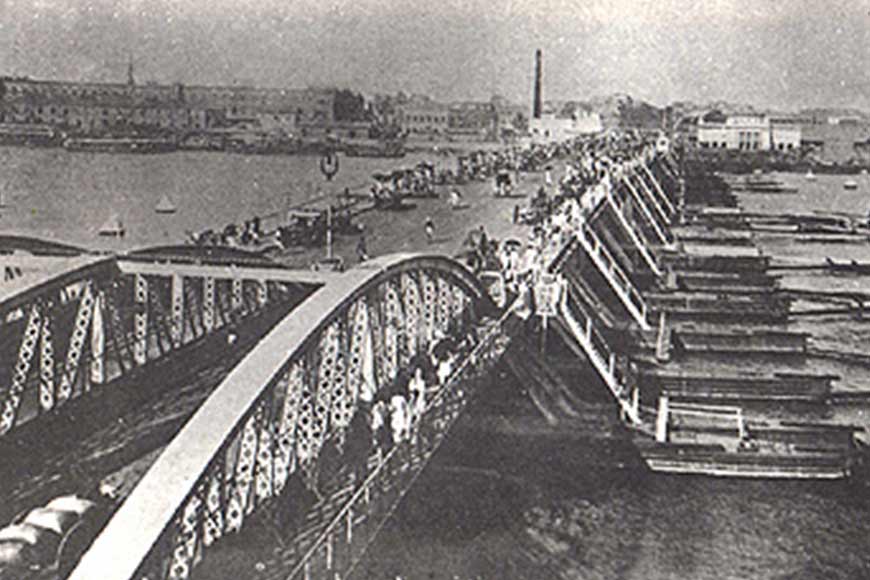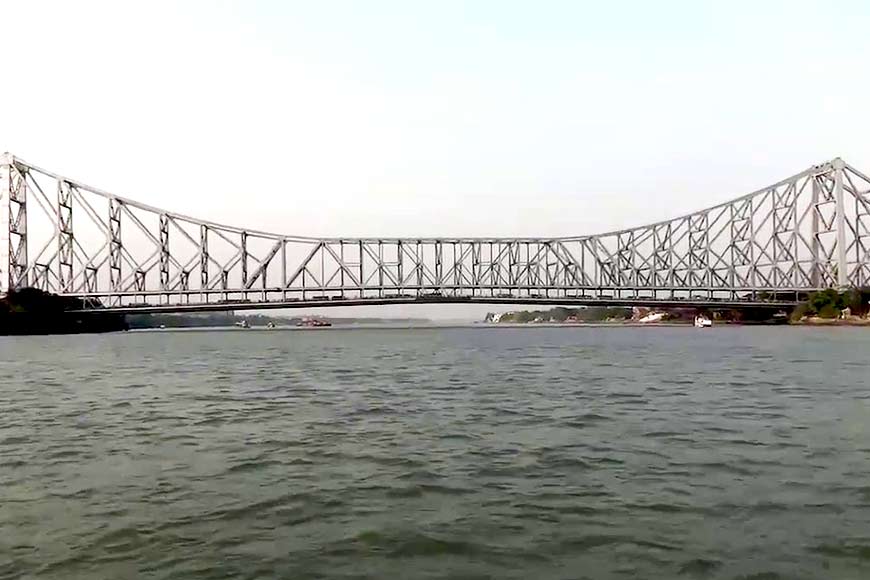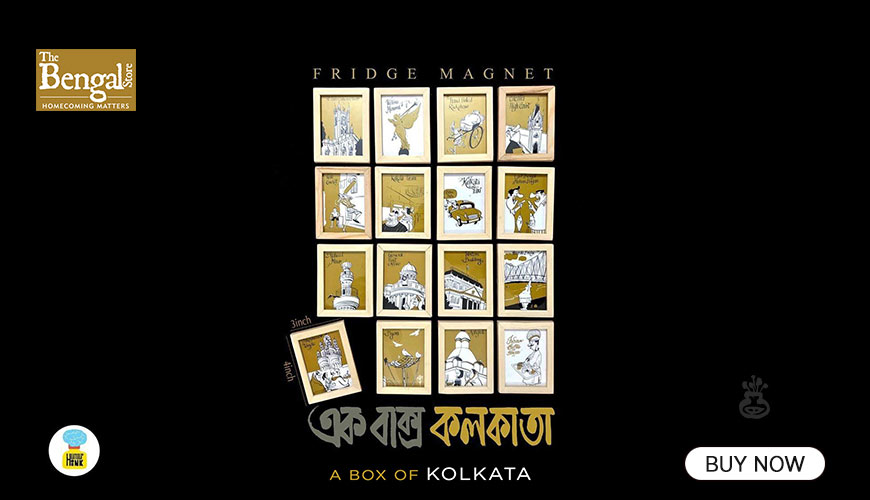Did you know Tata Steel supplied the steel that made Howrah Bridge!

Howrah is the second largest city of West Bengal, an important transportation hub, an industrial city and a major gateway for its twin city of Kolkata. There are many places of attraction in Howrah. Of all the attractions, one of the most significant spot is the Howrah Bridge itself. This cantilever bridge is the sixth largest bridge in the world. It is 2,150 feet in length with a suspending span right above the Hooghly River.
Before this bridge was built (later re-named Rabindra Setu), there was an old pontoon bridge over the Hooghly River connecting the two cities. Rabindranath wrote a short poem for children about the old Howrah Bridge in Sahaj Path….
Howrah-r bridge cholay mosto sey bichhey/
Harrison Road cholay taar pichhey pichhey
(Howrah Bridge moves ahead like a huge scorpion/ and Harrison Road follows it behind)
Howrah Bridge is an integral part of the cityscape and despite its eight decades of existence, is still referred to as the New Howrah Bridge. The pontoon bridge that preceded the New Howrah Bridge was built in 1874. But it wasn’t strong enough to handle the huge traffic between the two cities or to weather the frequent storms in the area. Sir Bradford Leslie was assigned to construct the bridge at a cost of Rs 22 lakhs. But as long as the bridge was operational, a whooping amount of Rs 34 lakh 11 thousand was collected as toll fee. Initially the bridge was periodically unfastened to allow steamers and other marine vehicles to pass through. Before 1906, the bridge used to be undone for the passage of vessels during daytime only. Since June of that year it started opening at night for all vessels except ocean steamers, which were required to pass through during daytime.

The initial construction process of the bridge was stalled due to the World War I, In 1930 the Goode Committee was formed to investigate and report on the advisability of constructing a pier bridge between Calcutta and Howrah. Based on their recommendation, M/s. Rendel, Palmer and Tritton were asked to consider the construction of a suspension bridge of a particular design prepared by their chief draftsman, Mr. Walton.
On the basis of the report, the order for construction and erection of the bridge was placed on M/s.Cleveland Bridge & Engineering Company in 1939. Again World War II (1939-1945) intervened. All the steel that was to come from England were diverted for war effort in Europe. Out of 26,000 tons of steel, that was required for the bridge, only 3000 tons were supplied from England. In spite of the Japanese threat the then-British Government in India pressed on with the construction. Tata Steel was asked to supply the remaining 23,000 tons of high-tension steel. The Tatas’ developed the quality of steel required for the bridge and called it Tiscom. The entire 23,000 tons was supplied in time. The fabrication and erection work was awarded to Braithwaite Burn & Jessop Construction Company Limited (BBJ), a local engineering firm of Howrah.
Because of the war there was no opening ceremony and it was opened to the public in 1943. It is a unique bridge that was official classified as " Suspension Type Balanced Cantilever ". When it was commissioned it was the third longest cantilever bridge. The bridge does not have any nuts and bolts. It is of riveted construction. The bridge deck hangs from 39 pairs of hangers suspended from the main trusses. With the completion of this bridge, India came of age in bridge construction and bridge building. But the actual tribute should go to the workers of The Tata Steel and Braithwaite Burn & Jessop Construction Company Limited (BBJ). In spite of Japanese air attacks (the last Japanese air attack took place on 5th.December 1941) the work was completed in time.
Also read : Light-and-sound show on Howrah Bridge!
The entire project cost 25 million (£2,463,887). The project was a pioneer in bridge construction, particularly in India, but the government did not have a formal opening of the bridge due to fears of attacks by Japanese planes fighting the Allied Powers. The first vehicle to use the bridge was a solitary tram.

The bridge has been immortalized in celluloid as well. Ritwik Ghatak’s adventure film, Bari Theke Paliye shows the protagonist experience an epiphany as he looks at the gigantic bridge. It features prominently in Mrinal Sen’s Neel Akasher Neechey or Satyajit Ray’s Parash Pathor. In 1953, Bimal Roy’s Do Bigha Zameen features the bridge and then in 1958, an entire romantic film in Hindi was named Howrah Bridge, that starred yesteryear superstars, Ashok Kumar and Madhubala. The bridge appears prominently in Roland Joffé’s 1992 film, City of Joy. In recent times, Bollywood flicks including Barfi and Yuva too, feature the bridge. The Howrah Bridge has an iconic status and is truly the gateway to Kolkata.











